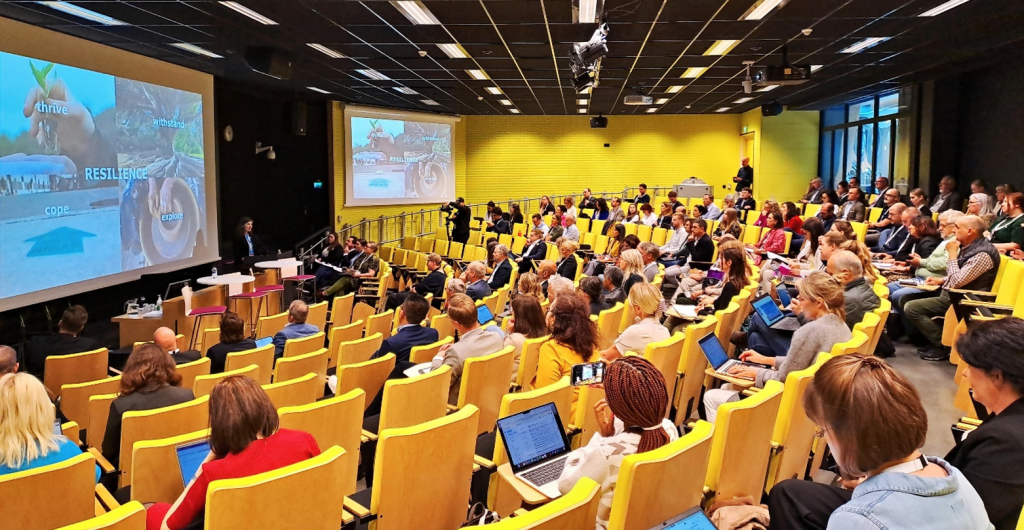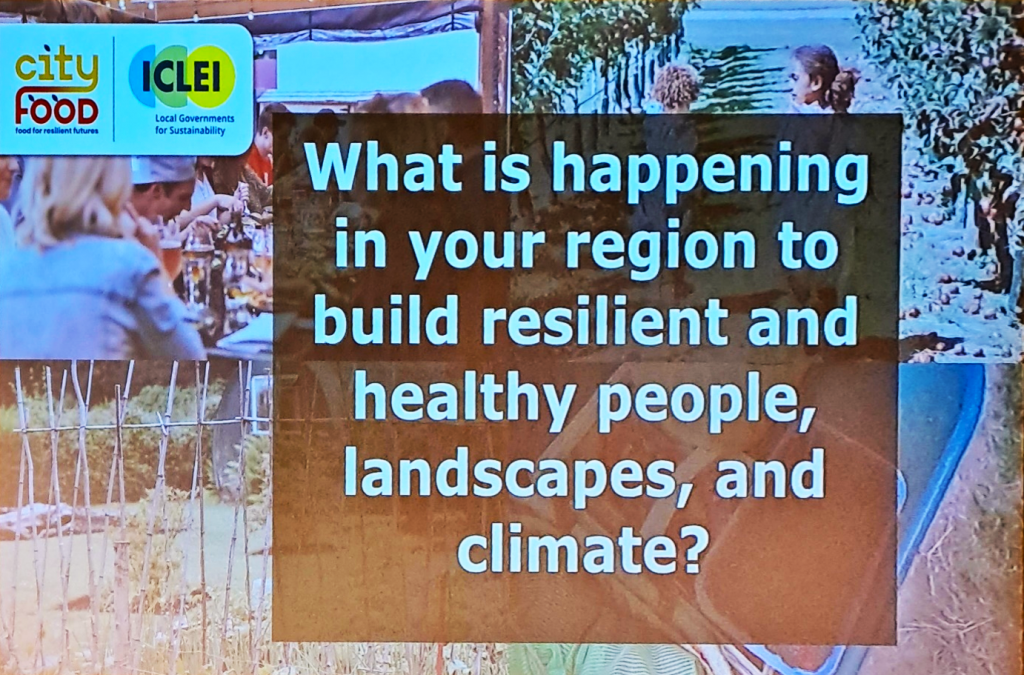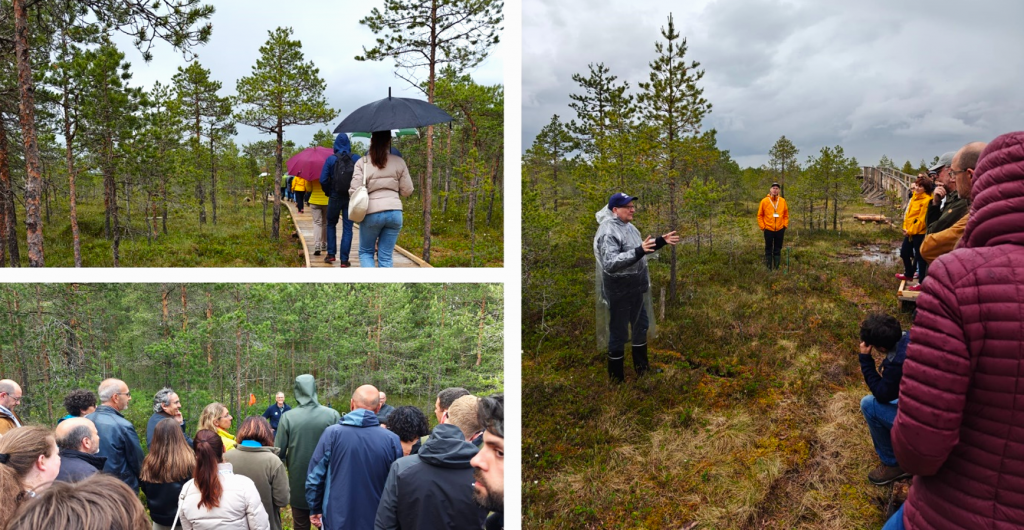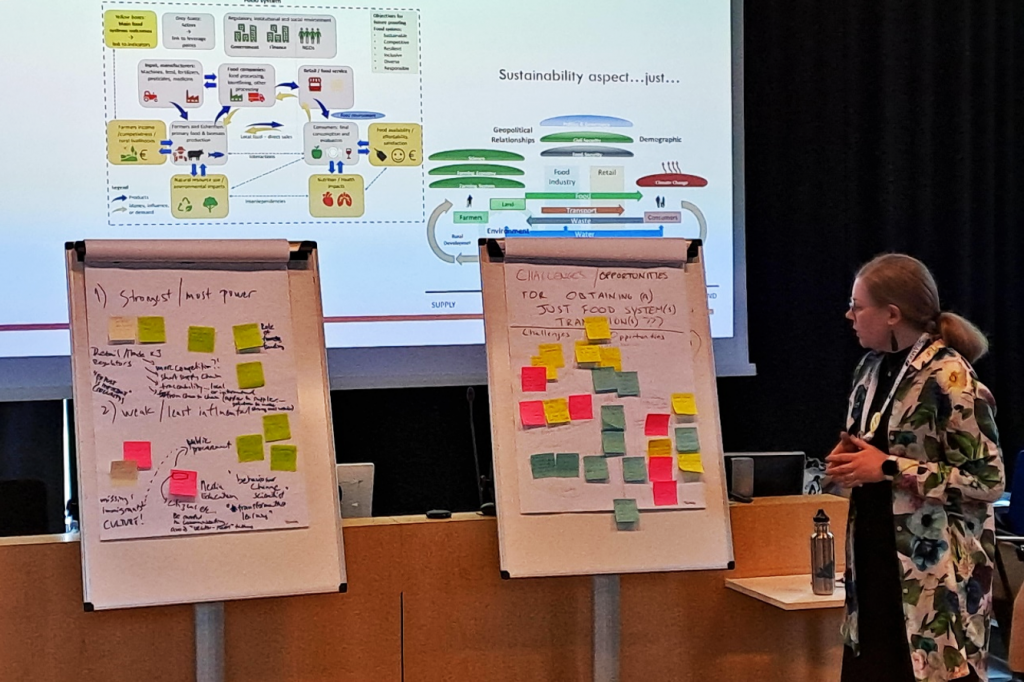The 10th Annual Conference of the Network of European Regions for Innovation in Agriculture, Food and Forestry (ERIAFF) was organised in Seinäjoki, Finland, on 11–13 June 2024. The theme of the conference, Regions as Changemakers for European Resilience and Sustainability, continued the promotion of regional policymakers and agri-food and forestry experts to discuss regions’ role in building resilient, sustainable and just agri-food and forestry systems in Europe. The writers of the article participated in the event to strengthen collaboration of Oulu University of Applied Sciences (Oamk) and the North Ostrobothnia region in European-wide cooperation initiatives and to exchange information on current topics and projects.
Almost 200 agri-food and forestry experts gathered in the 10th Annual ERIAFF Conference (image 1) in Seinäjoki, Finland, on 11–13 June 2024. ERIAFF is the Network of European Regions for Innovation in Agriculture, Food and Forestry that was established in 2012 in Florence, Italy. The conference was arranged in collaboration with Seinäjoki University of Applied Sciences and Regional Council of South Ostrobothnia.

The theme of the conference, Regions as Changemakers for European Resilience and Sustainability, continued the promotion of regional policymakers and agri-food and forestry developers, researchers and other experts to discuss regions’ role in building resilient, sustainable, and just agri-food and forestry systems in Europe.
The Region of North Ostrobothnia and Oulu University of Applied Sciences alongside other regional organisations have been part of the ERIAFF network since 2020. As described in the Regional Programme of North Ostrobothnia 2022–2025 [1], the region is a nationally significant agricultural producer. Securing and systematically developing agriculture, forestry and food production, as well as increasing the profitability of the related value ecosystems are some of the keys to sustaining sustainable food systems, food safety and food security in the region and beyond.
The ERIAFF conferences provide an opportunity to meet experts all around Europe and exchange information on current topics and projects. As Oamk is actively collaborating with regional partners to enhance the North Ostrobothnia agri-food and forestry systems, the ERIAFF network provides us an important insight into international RDI initiatives, as well as a network of experts to discuss and collaborate with in the efforts to build up sustainable, resilient, and just European agri-food and forestry value ecosystems.
Regions as changemakers – common challenges and future opportunities
As of 1 January 2024, the European Union [2] has a total of 1 165 regions at NUTS 3 level. With varied territorial typologies including population demographics, land properties and use, pools of natural resources and economic activities, there are also differences in regional strengths and challenges. However, the major global and EU-wide challenges are present in every region. The region-specific characteristics and regional approaches can bring valuable assets into tackling the common challenges and capitalising on the related opportunities.
The first conference day set the scene for the political landscape for European regions as changemakers and provided a case study-based thematic sessions on resilience and sustainability of agri-food and forestry systems and more broadly rural areas and societies. The crucial role of regions and partnerships in making changes was repeatedly highlighted.
One of the keynote speakers, Research Director Hugo de Vries from INRAE (France’s National Research Institute for Agriculture, Food and Environment), presented the importance of partnerships in the regions to support the transition from linear chains towards more circular and cooperative systems. There is a need for a systematic transformation of individual systems towards collective ones. This leads us to consider our food systems as parts of a bigger picture: What is happening in our regions and how are we promoting the build-up of more resilient societies, Senior Expert Anna Bruen from ICLEI (Local Governments for Sustainability) Europe aptly asked in her presentation (image 2).

The second day of the conference was opened by Pekka Pesonen from the Ministry of Agriculture of Finland by leading the conference participants into discussions of the resilient and sustainable agri-food and forestry systems. In the parallel thematic sessions, discussions about the common challenges and future opportunities continued in smaller groups.
One of the sessions led the participants into the details of the South Ostrobothnia food chains, which provided an opportunity to compare the uniqueness of South and North Ostrobothnia. As Oamk is tightly involved with the development of the North Ostrobothnia food systems, we took notice of the similarities between these two nationally important food production regions. For example, South Ostrobothnia is actively developing food technologies and security of supplies. In North Ostrobothnia, the utilisation of new technologies (e.g. drones and automotive vehicles), as well as sensor technologies to provide for traceability are some of the elements of Oamk’s current RDI activities. In 2026, the City of Oulu together with 39 other cities and municipalities are collaborating to bring forward the Northern Finland’s food production and products that are brought together by the Artic Food Lab programme as part of our European Capital of Culture year.
Study visits – getting familiar with local activities
As one of the main objectives of the ERIAFF network is to improve the performance of the European innovation partnerships by acting as facilitators of information flows and connections between research and businesses, several study visits were organised to present local practices in the agri-food and forestry sectors. For example, the Climate Farm Demo project organised a visit to a local farm, Tikan maatila, to demonstrate sustainable and resilient agricultural practices. The Tikka Farm is one of the biggest organic milk producers in Finland with their 350 milking cows. The farm is striving to apply sustainable processes, and several measures have been taken to decrease the carbon footprint of the produced milk.
Another study visit focused on sustainable forestry and restoration activities. The experts of the Finnish Forest Centre and SeAMK guided a group of around 50 people around the Paukaneva nature reserve and the nearby commercial forests while leading the discussions about peatland forestry in Finland, as well as the challenges and opportunities of restoration of peatlands (image 3). Almost a third of the European peatlands are located in Finland [3] where the drained peatlands are mainly used for agriculture and forestry. In addition, a relatively small area is also used for e.g. energy peat production. [4]

In Finland, the Just Transition Fund (JTF) aims to halve the energy use of peat by 2030, which brings about adverse socioeconomic and environmental impacts. One of the JTF-funded projects addressing these impacts is the Era of Biochar that seeks alternatives to overcome the related local and regional challenges in North Ostrobothnia and Ostrobothnia by developing biochar production, products and usage through multidisciplinary cooperation while reducing anthropogenic environmental burden in the process, as well as by creating new business opportunities especially in relation to former peat production areas.
From regional to international collaboration
Participation in the ERIAFF network is based on voluntary commitment, and members may choose to collaborate in different working groups. Oamk has participated especially in the activities of the working groups of Food Systems and Forested Regions. During the Food Systems working group meeting, Professor Minna Kaljonen from the Finnish Environmental Research Institute presented principles and criteria for just food system transition and led the workshop discussions to investigate regional and EU-wide challenges and opportunities for a successful transition along with strong impactors and weak influencers in the food systems and solutions to balance the differences (image 4). For example, to enhance and strengthen the role of consumers on the whole food system, a solution might be to enhance communication, education and collaboration between the private and public sectors. The discussion about the challenges and opportunities included the topical issue of peatlands and the related direct and indirect impacts of the different land uses for food systems.

As the conference ended, we were impressed with what we saw, heard and experienced. It was clearly pinpointed that international networks can and do support our regional RDI activities and collaboration while we head towards more and more innovative, sustainable, resilient and just agri-food and forestry systems. To keep in mind, we need to maintain stable and strong communication connections with our stakeholders as we develop our regional strategies to support local businesses and to promote research and innovations within the agri-food and forestry systems.
On the other hand, it is important to exchange the local and regional examples and best practices around Europe to provide opportunities for mutual learning and for understanding the regional differences and similarities. As we prepared to start our journeys back to our home regions, the consensus was strong: we can have our own role in the ERIAFF network, and we have a lot to share with our colleagues around Europe. Hopefully, we will meet again in the 11th Annual ERIAFF Conference in Catalonia, Spain on 8–9 April 2025.
Sanna Tyni
Lead Researcher
Low-carbon solutions/ R&D unit
Oulu University of Applied Sciences
Marja-Liisa Järvelä
Project Manager
Low-carbon solutions/R&D unit
Oulu University of Applied Sciences
Era of Biochar (Biohiilen aika) The goal of the “Biochar Era” group project is to support the attractiveness of the region, create new business opportunities, and particularly impact agricultural greenhouse gas emissions by creating new soil carbon stocks. Duration: 2.1.2024–31.12.2026 Funders: Co-funded by the European Union, Regional Council of Ostrobothnia, council of Oulu Region, Oulu Innovation Alliance Coordinator: University of Oulu Subcontractors: Oulu University of Applied Sciences, University of Vaasa, Natural Resources Institute Finland, Utajärvi Municipality, Maaseudun sivistysliitto
All publication from the Era of Biochar (Biohiilen aika -project)
References
[1] Council of Oulu Region. (2022). North Ostrobothnia, Active, Good, and Functional. Regional Programme of Northern Ostrobothnia. https://www.pohjois-pohjanmaa.fi/wp-content/uploads/2023/01/Summary-of-the-regional-programme-of-Northern-Ostrobotnia-2022-2025.pdf
[2] European Union. (2024). NUTS – Nomenclature of Territorial Units for Statistics. https://ec.europa.eu/eurostat/web/nuts
[3] Taylor, C., & Potter, J. (20.4.2023). Peatlands Matter for Climate and Biodiversity. Green European Journal. https://www.greeneuropeanjournal.eu/peatlands-matter-for-climate-and-biodiversity/
[4] Clarke, D., & Rieley, J. O. (toim.). (2019). Strategy for Responsible Peatland Management. (6. p.). Internation Peatland Society. https://peatlands.org/assets/uploads/2019/10/srpm2019finalforprint.pdf


Vastaa
Sinun täytyy kirjautua sisään kommentoidaksesi.